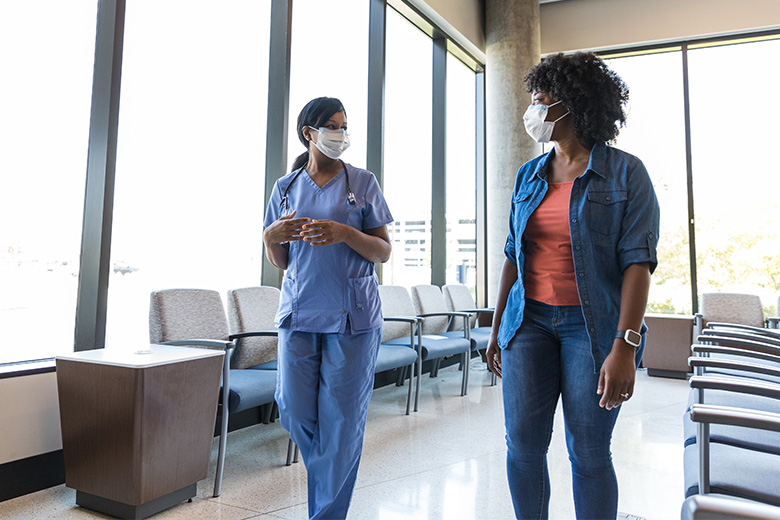Organ Transplant
Appointments
Infections in Solid Organ Transplants
Patients who undergo solid organ transplantation are at a higher risk of infection because the medications used to prevent rejection of the transplanted organ (e.g., prednisone, cyclosporine) decrease the body’s ability to fight off infection. Infections in a transplant recipient may occur from the reemergence of an old infection (e.g., tuberculosis) that had previously been well controlled by the body’s immune system, or from a new exposure. The risk of infection depends on the type of transplant, the specific immunosuppressive medications used and the exposure history.
Prior to transplantation, patients undergo an infectious disease evaluation to make sure there are no latent infections that need to be treated or any infectious contraindications to the transplant. Pre-transplant evaluation includes:
- A thorough history and physical. The history includes questions on past infections, including childhood infections; vaccinations; antibiotic allergies; and potential exposures to infections through travel within the United States and overseas, contact with animals, dietary habits and contact with tuberculosis testing.
- Testing may include a tuberculin skin test (PPD) to determine exposure to tuberculosis; a chest x-ray; and laboratory tests to determine immunity to certain viruses, including Cytomegalovirus (CMV), Varicella zoster virus (VZV), herpes simplex virus (HSV) and Human Immunodeficiency Virus (HIV). Other testing may be recommended based on exposure history or the physical exam.
A history of a prior infection, such as HSV or tuberculosis, is not necessarily a contraindication to transplant. Prior knowledge of infectious exposures allows the transplant team to anticipate complications and to treat or prevent infections early.
Infections in transplant patients are usually divided into three time periods after the transplant has occurred. Certain infections are more likely to occur at specific time intervals than others:
- Month 1 (Early post-transplant): The immune system is usually most suppressed in the first month after transplant. Most infections during this time period are due to surgical or hospital acquired infections. These may include infections from bacteria or a yeast called candida. Infections may present as a urinary tract infection, wound infection, pneumonia or a bloodstream infection. Herpes simplex virus (HSV) may reactivate (e.g., as cold sores). Many transplant recipients are prescribed medications to prevent the reactivation of HSV.
- Months 2 to 6: During this time period, transplant recipients are at risk for unusual or opportunistic infections such as Pneumocystis carinii pneumonia or tuberculosis. This middle period is also when the transplant recipient is at highest risk for reactivation of certain viruses, including Cytomegalovirus (CMV), Varicella zoster virus (VZV), Epstein Barr virus (EBV) and hepatitis viruses. A comprehensive discussion of each virus, its prevention and treatment is beyond the scope of this Web site; please discuss these with your transplant team for further information.
- CMV (Cytomegalovirus): CMV infection occurs in 44 to 85 percent of kidney, heart and liver transplant patients. Symptomatic CMV disease occurs in 8 to 29 percent of kidney and liver transplant recipients. CMV disease can occur if a transplant recipient without a history of CMV gets an organ transplant from a donor with a history of CMV (primary infection). CMV disease can also reactivate after transplantation in a recipient who has a history of prior CMV infection. CMV disease can present in a variety ways, from a flu-like illness with fever, muscle aches and fatigue, to hepatitis. CMV is both preventable and treatable with antiviral medications such as ganciclovir, valganciclovir and foscarnet.
- VZV (Varicella Zoster Virus): VZV is the virus that causes chicken pox. Ninety percent of adult transplant recipients have been exposed to VZV during childhood, and they are at risk for reactivation of VZV in a form called shingles. Shingles is a painful, blister-like rash.
- EBV (Epstein Barr Virus): EBV is the virus that causes mononucleosis or "mono." Transplant recipients who are not immune to EBV may get mononucleosis. Symptoms include fever, fatigue and muscle aches and pains. EBV may also reactivate and cause post-transplantation lymphoproliferative disease (PTLD) in 1 to 2 percent of kidney and liver transplants, respectively. Symptoms are varied and can include fever, sore throat, abdominal pain, jaundice or kidney and liver dysfunction. Treatment depends on the level of disease.
- Hepatitis B and C: Viral hepatitis can recur in transplant recipients who receive their transplants because of chronic hepatitis. Hepatitis B recurs in 5 to 10 percent of patients, whereas Hepatitis C recurs in 80 to 90 percent of recipients.
- > 6 months (Late post-transplant): Most transplant recipients do well six months after transplant. They are at risk for community acquired infections such as urinary tract infections, influenza and pneumococcal (bacterial) pneumonia.
Antibiotic Therapy post-transplant
Antibiotics are used in two ways after a transplant. Some antibiotics (e.g., acyclovir, sulfa antibiotics) are given on a routine basis to prevent infections after transplantation. This use of antibiotics is called prophylaxis, or preventative therapy. Antibiotics are also used to treat active infections.
Avoiding exposures post-transplant
Transplant recipients remain at a higher risk of infection after leaving the hospital. Their transplant team should discuss ways of protecting themselves from infection while at home. These recommendations to transplant patients may include:
- Avoiding people with colds, influenza, tuberculosis or other contagious infections
- For recipients who are not immune to chicken pox, avoiding contact with anyone who has chicken pox. If such a contact occurs, they should call their doctor immediately
- Washing or peeling all fresh fruit and vegetables
- Thoroughly cooking all seafood
- Refraining from changing a cat's litter box, if at all possible. If not possible, the transplant recipient should wear gloves and change the box daily to prevent an infection called toxoplasmosis
- Discussing any travel outside the United States with your transplant team

